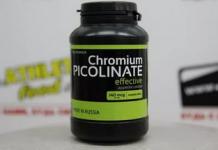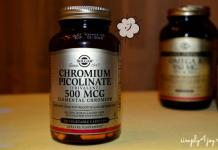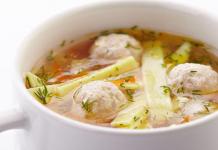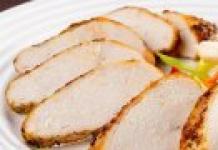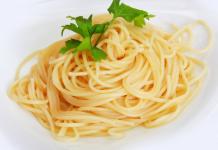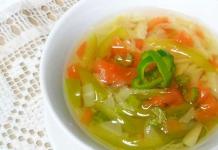Everyone knows that all sorts of metal things, such as tools or mechanisms, love affection, cleanliness, and lubrication. The better they are lubricated, the longer they live and the better they work. There are a large number of different lubricants in aerosol cans on sale. However, they are also expensive (200 ml of oil + filler mixture are sold to you for the price of a liter of excellent high-quality engine oil). And quite specific in their composition. It has been noticed that the grease from cans dries out rather quickly and instead of a lubricating effect after a while creates increased friction. And “thin” mechanisms can generally jam from such a lubricant. And finally - they are not always at hand. Therefore, we will make ourselves a simple home-made butter dish, or better, a few. Since different mechanisms require different types of lubrication.
The main task of the oiler is to ensure the delivery of oil to the right place and in the right amount. Too much oil will add nothing but dirt. It just drains in vain and disappears. This means that our butter dish should be able to give out minimal portions of oil (we can always get a large amount by giving out many small portions). And, besides, it should be quite sneaky. What to be able to lubricate even places inaccessible to the eye and hidden cavities and parts, power tool bearings without disassembling it, etc.
Despite such a “formidable” technical task, you can make a homemade oiler from any plastic vial. The only condition is that it must have flexible walls so that it can be squeezed with your fingers and squeeze out a portion of the oil, creating pressure in it.
To minimize the amount of oil dispensed, take a fairly thin plastic tube and insert it into the stopper of the vial. The tube inside the bubble should be to the very bottom, but be cut there at an acute angle. And so that the oiler does not “poison” the air, we seal the place where the tube is inserted into the cork. For example, using hot glue.
Pour a little machine oil into the vial and our oiler is ready to go. It is enough to lightly squeeze the plastic vial with your fingers, as a drop of oil appears on the tip of the tube. And you can spot lubricate mechanisms and tools that need lubrication.
If you do not pour too much oil into the vial, then such an oiler also has the effect of a “non-spill”. If the vial is placed on its side, the oil level will be below the level of the tube inside the vial. And the oil will not leak out of it. This is a very important advantage, since engine oil, despite its apparent viscosity and density, is able to flow even into microscopic holes and saturate any porous material.

Another version of the oiler can be made from vials equipped with a spray bottle. Such an oil can can be useful for lubricating very hard to reach places, as it "spits" oil or sprays oil by volume. For example - for lubricating the insides of locks or gearboxes. Such an oiler gives out lubricant strictly in portions. When you press the spray head, a strictly limited portion of oil enters the tube under pressure and shoots out of the tube.
To make such an oiler, you will need to drill a hole in the spray head with a drill of the appropriate diameter for a thin tube. We insert a tube into the hole with a slight interference (for fixing) and the oiler is ready. It remains to fill it with machine oil. So in a few minutes of work, we can make ourselves the right number of oilers for different types of lubricants.

Another application of such an oiler is a strictly metered "issuance" of oil for preparing a fuel mixture for two-stroke engines. For them, as you know, you have to prepare a fuel mixture of oil and gasoline. This procedure is not complicated and the mixture is prepared ahead of time and in the amount of several liters. Oil and gasoline must be mixed in certain proportions, usually 1:50 (50 volume parts of gasoline must be added to one volume part of oil). Lack of oil will lead to oil starvation and overheating of the motor, and excess oil will lead to the deposition of excess carbon deposits in the motor. Therefore, it is necessary to measure the oil carefully enough, with an accuracy of several milliliters. This is exactly what an oil can will help with.
By the same principle, filling bottles for the fuel mixture for two-stroke engines can be made. The gas tanks of two-stroke engines on chainsaws or lawn mowers are very modest in volume and, as a rule, have a rather narrow neck. Therefore, it is not very convenient to fill in the fuel mixture from large canisters. There is always a risk of pouring more mixtures than necessary. But if you make a special filling bottle (from a PET bottle) with a thin tube inserted into the cork, the filling procedure will become absolutely waste-free and safe. Fuel can be poured even to the nearest drop, carefully monitoring its amount in the tank. In addition, the risk of getting dirty is drastically reduced.
Before inserting the drill into the punch, it must be lubricated. To do this, take a drill and lower it into a jar of grease, rotate it a little and take it out. When the drill is inserted into place, you can notice excess lubricant, which, when turned on, will scatter along the walls, and this is undesirable. It is for this purpose that you need a homemade oiler.
How to do it - look at the video
To create a butter dish, we need:
- two paper capacitors;
- pliers;
- soldering iron 65V;
- lathe;
- drill;
- brush.
We will make our oiler from the steel case of a paper capacitor. To do this, we clamp it with pliers and heat it over an open fire. When it is hot, the condenser cover can be easily removed.


We do the same with the second capacitor. We remove the insides and we are left with only metal cases, which we close with lids. We press well and solder the joints in both cases. The tinned case is easily soldered.


Rosin can be used as a flux.
This is our body. Now we need to machine an adapter, a cap and a plug from a piece of metal on the machine.


For the adapter, we use an old bronze tube from an old chandelier. We grind the M12 thread with a step of 0.75 mm using a die. We bore the hole to a diameter of 10 mm. We grind a notch for a hole in the case and cut it off.


We make a plug from brass. We grind it to the desired shape under the hole in the body. We drill a hole in it, insert the chain and roll. We cut off the excess.


The cap is made of duralumin. We grind the necessary shape, make a knurling. We drill and bore, cut the M12 thread, in increments of 0.75 mm. We process the reverse side and cut off all unnecessary. We fasten the chain.
Performing, we meet with nodes that need lubrication during assembly. And here there is a need for some mysterious reservoir for storing oil - an oiler.
Tool companies offer a range of lubricators, all of which perform the same function but have different designs.
Oilers have a modern hemispherical design. Available in 2 configurations: lever style and pistol style. Equipped with a pump and a rigid or flexible steel extension.


Do-it-yourself car oiler
 Now let's talk about how to make a do-it-yourself car oiler (if there really is a need for this). The chemical industry will help us with this.
Now let's talk about how to make a do-it-yourself car oiler (if there really is a need for this). The chemical industry will help us with this.
We go to the store or department of household chemicals. We find a shelf with detergents. And now the most important thing, we select a handy bottle of liquid soap (the most convenient bottle is a cylindrical shape). We buy, wash our hands, and then make an oiler from the used bottle, for this we fill the bottle reservoir with engine or transmission oil.
That's all, the car oiler is ready. This oiler will serve you for a long time.
Yellow-footed mushrooms with an oily brown cap are familiar to everyone. These are butterflies, of which there are 14 species in Russia. They grow in families on forest edges flooded with the sun, prefer a cozy place under a pine tree, they can be found along roads and near industrial enterprises, and they appear three to seven times a year after warm rains. Hurry to the forest to collect them. Three days after the rain, the mushrooms will begin to age and deteriorate.
Oil mushrooms: how to collect them?
Usually boletus appear in their former places of growth. Every mushroom picker knows them well. If you are a beginner and went to the forest for the first time for mushrooms, pay attention to the tubercles under the foliage, where the butterflies live. Carefully removing the foliage, you will find a large mushroom family. Collecting them is a pleasure, the basket fills up quickly.
Remember: mushrooms should be cut with a knife. If they are uprooted, you can injure the mycelium, and next year they will not be oiled there. It is better to collect young, small-sized strong mushrooms.
A lot of adhering leaves, needles and other debris are oiled on the hat. Feel free to clean the mushrooms right in the forest, at home there will be less hassle on how to process the butterflies.
Do not pick mushrooms near highways and big cities. Butter mushrooms, like other mushrooms, well absorb salts of various metals, including heavy ones, accumulate from the soil and air. Therefore, collect them only in the forest, away from roads and enterprises.
Butterfish got its name because of the slippery slimy cap, the surface of which protects the fungus from drying out. However, it is precisely because of the Shrovetide surface that these mushrooms are difficult to clean.

How to process oils? Different mushrooms are processed differently. Therefore, when you come home, sort the mushrooms you have collected and start the primary processing, which consists in cleaning, washing, sorting and cutting.
To thoroughly clean these mushrooms, place them in a bucket or basin of water for a few minutes and put oppression on top, then they will not float. Dry grass, leaves, branches on the surface of the caps get wet and easily separated. After that, start cleaning. It is necessary to cut off the remnants of the mycelium from the leg, scrape off all the dirt from the mushroom with a knife, free the hat from the film, which is well removed, cut out, if any, rotten places.
Start washing the oils. The fact is that, no matter how you select mushrooms, collecting them in the forest, worms will definitely come across. So that the worms float to the top, and the larvae sink to the bottom, place the mushrooms in salted water for three hours. Then rinse again well with running water.
How to properly process oils? After cleaning and washing, you need to sort by size: leave small mushrooms whole, for medium butter mushrooms, separate the hat from the stem, and cut large ones into pieces.

So that the pieces do not fall apart, you need to scald them for two minutes in water. Butter can not be boiled until cooked, but immediately fry or marinate raw. After primary processing, they are dried, pickled, fried, stewed, boiled, salted.
Processing oil drying
How to process oilseeds by drying? This method is not very common, but it has found application. Despite the fact that the oil after drying becomes brittle and thin, all useful substances are preserved in them. For processing, choose young, freshly picked. Rinse the mushrooms without damage, peel and remove the skin.

Dry them in the air, in the sun. To speed up the process at a temperature of 50-70 degrees. Oilers are strung on a thread and hung on the roof, attic or laid out on trays, a table, in a sieve. The main thing is that the drying place is protected from dirt, dust and wind. In unstable weather, combine drying - in the sun and in the oven. Oil can be dried over a stove or oven on metal frames or in an embankment on wooden shavings. After two days, the mushrooms will become brittle and brittle, which means that the drying process is completed.

Before the sacrament of pickling, the selection of spices, properly prepare the mushrooms, following the above methods for their pre-treatment. Clean and wash the oils. Then place them in a pot of water, salt and add citric acid to taste, which prevents the mushrooms from browning. Once the water boils, reduce the heat and simmer for 20 minutes. Drain the water and wash the mushrooms.
Next, you have to choose how to process butter mushrooms according to culinary recipes. Here is one of the easiest to prepare: in a saucepan with one liter of water, add salt (50 grams), 80 grams of sugar, 100 milliliters of six percent vinegar, a few peas of black and allspice, cloves, bay leaf. Boil the prepared marinade for three minutes, add two kilograms of butter prepared by you to it and cook until tender for another twenty minutes.
As soon as the mushrooms settle to the bottom of the pan, and the marinade becomes transparent, place them in warm, dry, clean jars. Pour the marinade all the way to the top. In each jar, add 1 tbsp. a spoonful of vegetable oil. After the marinade has cooled, covered with parchment paper and tied, refrigerate.
If you will not store your pickled butternuts for a long time, but intend to eat them quickly, then a quick recipe is quite suitable. Put the pre-treated 5 kg of slightly scalded butter into dry heated jars, after placing a dry sprig of dill and a piece of lemon zest on the bottom of the container.
Marinade is prepared separately: 2 tbsp. l. salt, 3 - sugar, 5 peas of black and allspice, bay leaf, chopped garlic - 2 cloves. Pour a liter of water, after boiling, cook for 5 minutes. Pour jars of oil with hot, freshly prepared marinade. Pour 1 tbsp into each jar. l. vinegar. Close the jars with ordinary lids. When they have cooled, put in the refrigerator, after a few days the butter is ready for use.
processing method
How to quickly process butterflies? Just fry them, pre-scalded for ten minutes. After that, put the mushrooms in a pan with vegetable oil and fry until the liquid evaporates.

For taste and smell, add onions, carrots to the mushrooms and fry for another 10 minutes. Season the butternut squash with sour cream, pepper and salt. Mix everything and your dish is ready.
Oil storage
Fresh mushrooms are considered perishable. But if you have learned how to process butternuts correctly, they can be stored for consumption in the winter. How should oils be stored?
- Boiled mushrooms are ready to eat. Cool them, arrange them in bags, freeze them, so they will be stored all winter.
- You can also freeze butter fried in vegetable oil.
- Pickled in jars covered with parchment paper or an ordinary lid, placed in the refrigerator, mushrooms can be stored for several months.
- Dried butternuts should be stored strung on a string or in a tightly closed container in a dry place. When damp, dry the mushrooms in the oven, otherwise they will become moldy and disappear.
You have learned how to collect, clean and pickle butterflies, so feel free to go to the mushroom season in the forest and collect as many mushrooms as possible. Boil, stew, salt, marinate, dry butter, and your table will always be diversified with dishes from them. Bon appetit and stay healthy!
With the approach of autumn, mushrooms appear in the numerous stocks of hostesses: pickled, frozen, salted, dried. There are nice and tasty mushrooms on a yellow leg with a brown oily hat - butterfish.
The Latin name for oil is Suillus luteus (late oiler or yellow), the word luteus means "yellow". The people call the mushroom differently: masluh, chalysh, maslyuk, the British call it "Slippery Jam". It got its name because of the oily, sticky hat, red-brown or dark brown color. In rainy weather, more mucus is secreted.
The leg is golden yellow or lemon. It reaches a height of 10 cm, up to 3 cm thick. Adult mushrooms have a white or grayish-purple ring. Above the ring, the leg is white, the lower part of the leg is brown. The color of the pulp is white or yellow, with a pleasant smell and sour taste. On the reverse side of the cap, young people oil a white film.
Butterflies grow in pine forests near young pines. They love a sunny place, so they are not found in overgrown forests. It is easier to find on the edge of pine forests, on the roadside near a pine forest, on burners or old bonfires. Collection lasts from June until frost. Mass collection is in July.
Peculiarities
Oiler is an edible mushroom of the 2nd category. Professional mushroom pickers believe that it is second only to boletus, and is ahead of it in terms of fat and carbohydrate content. In terms of productivity in coniferous forests, oilers have no equal, they occupy the 1st place.
Energy composition:
- Carbohydrates - 46%
- Fat - 18%
- Proteins - 18%
Butter protein is absorbed by a person by 75-85%. In young mushrooms there is more protein than in old ones, as in caps there is more protein than in legs.
Ingredients
Servings: - + 4
- butternuts (boiled) 500 g
- onion 3 pcs
- vegetable oil 40 ml
- salt, spices to taste
Calories and BJU per 100 g
Calories: 60 kcal
Proteins: 3.24 g
Fats: 5.32 g
Carbohydrates: 1.12 g
30 minutes. Video
I pour the oil into the pan, heat it up. I spread the oil, cover with a lid and fry over low heat until they stop “shooting” (during cooking, you will understand what is at stake).
I add the onion and continue to fry, adding a little fire.
Fry, stirring occasionally, until there is no liquid left in the pan, and the mushrooms do not darken.
Similarly, I make preparations for the winter, only I don’t add onions and fry longer, about an hour. I put it in sterilized jars. I put the mushrooms tightly, approximately on the “shoulders” of the can.
To avoid mold (this happens from poor processing of cans or insufficient time for frying), I pour melted lard on top.
I don’t roll it under iron lids, but tightly close it with nylon. I store it in a cool place and for quite a long time. Serve on the table with potatoes or buckwheat.
Pickled butterfish
Pickled boletus with onions and herbs are included in the New Year's menu, becoming a traditional snack and a particle of home comfort.
Recipe #1
Ingredients:
- for 1 liter of water 2 tablespoons of salt and 3 sugar;
- 10 large peas of allspice;
- 1-2 cloves;
- clove of garlic;
- a few pieces of bay leaf (for an amateur);
- a pinch of dry dill seeds.
Cooking:
- I usually remove the skin from the hat for marinating. After cleaning, I rinse in a large container so that the sand settles and light debris floats to the surface. I wash in several waters.
- I cut large butternuts into several parts and boil them in salted water. I cook no more than 10 minutes. I first add a few drops of vinegar or citric acid to the water on the tip of a knife so that the mushrooms do not darken.
- I drain the water, fill it with the same composition, cook for 15 minutes.
I put the oils tightly in liter jars (I pre-sterilize the jars and lids), pour the marinade, add a tablespoon of 9% vinegar. I roll up the lids, store in the cellar or basement.
Recipe number 2
For the next canning option you will need:
- 1 kg oil is approximately the same size;
- a tablespoon of sugar;
- 10 large peas of black allspice;
- citric acid (10 gr.);
- bay leaf - 5 pieces;
For marinade:
- the third part of a glass of water;
- 2/3 cup 3% vinegar;
- a tablespoon of salt.
I bring the marinade to a boil, put the pre-washed and peeled butternuts. I take off the foam. I turn off the stove as soon as the marinade boils again. I put bay leaf, citric acid, sugar, pepper, mix and let cool. I put the mushrooms in jars, pour the marinade and cover with parchment (it is better not to cover with metal lids). I keep it in the refrigerator.
Salted boletus
For salting, they oil it, like mushrooms, I use freshly picked mushrooms, not wormy and small in size. Leave large ones to freeze. Some housewives salt only the caps, the legs are cut off when the mushroom is medium or large in size. Someone salts separately hats and legs. As they say, the taste and color ... If the oil is small, I do not remove the film from the hat.
Ingredients:
- 1 kg butter;
- 2 tablespoons of salt;
- 5 peas of black allspice;
- 4 pieces of bay leaf;
- 3 cloves of garlic;
- fresh dill;
- blackcurrant leaves (optional).
Cooking:
- Peeled and washed butternuts are boiled in a large amount of salted water for 20 minutes. As soon as they boil, I remove the foam.
- I wash the boiled mushrooms in cold water, put them in a colander so that the water is glass.
- I pour salt into an enameled pan or bowl and put the mushrooms with a hat down. I add bay leaf, pepper, chopped garlic and dill, sprinkle with salt. From above I make a layer of mushrooms and spices, so several times.
- When the mushrooms are laid, I put a flat dish on top and press it down with a yoke so that the butterflies release the juice and are completely in the brine. If there is not enough brine, I add boiled salt water and leave it for a day.
- I put the mushrooms tightly in steamed jars so that they are completely covered with brine. For insurance, I pour vegetable oil on top and leave it in the refrigerator.
- Mushrooms will be salted in 3 weeks. Get strong and tasty.
Butters for freezing
I clean the mushrooms from coniferous needles and foliage, wash them in running water, put them in a colander for 20 minutes so that the water is glass. I recommend dipping with paper towels to dry faster.
I cut large butternuts into pieces of 2-3 cm, put them in plastic bags or special containers. I do not advise putting a lot of oil in the package.
Do not forget to sort the mushrooms: put the cut ones in one bag, the small ones in another.
Put in the freezer. Stored for a year.
You can boil or fry before freezing, but fresh frozen mushrooms retain more nutrients than boiled or pickled ones.
How to defrost properly
Thawing is a lengthy process.
- Transfer the mushrooms from the freezer to the refrigerator and leave until completely defrosted. Remember, thawed mushrooms are used immediately, otherwise they will become a place for bacteria to accumulate.
- Do not defrost quickly. After a quick defrosting, they look unsightly and lose their taste.
- Let the butternuts get rid of the crust that formed during freezing, then you can start cooking. Boil thawed mushrooms in salted water for 15 minutes.


















